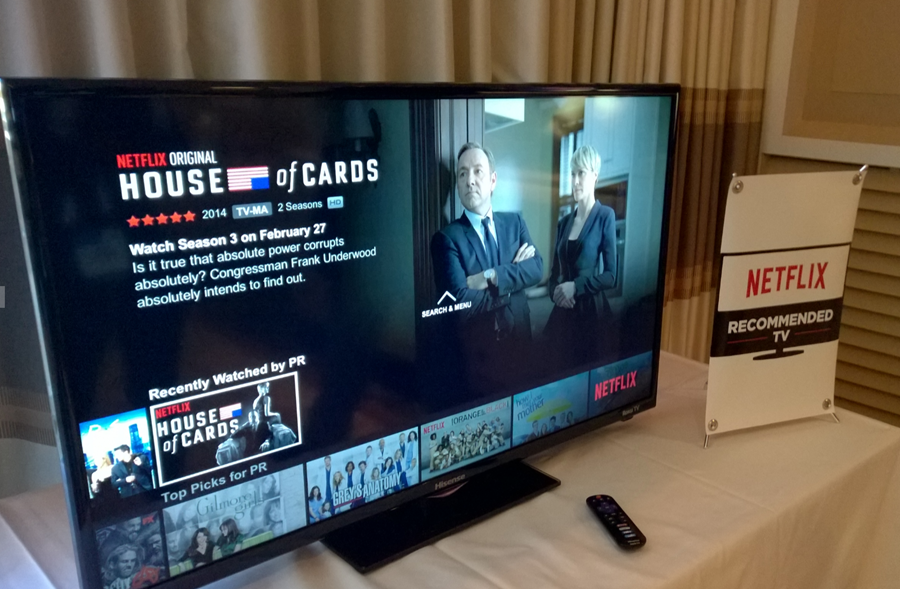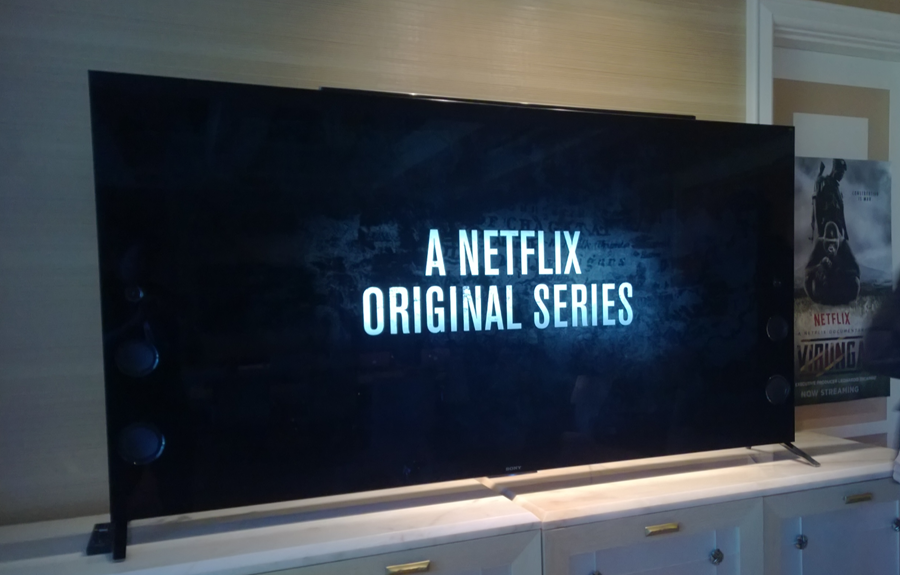During CES earlier this month, I had a chance to sit down with Netflix and tap their minds about the entertainment and video industries, and discuss some upcoming changes that will roll out later this year. Netflix says we’ve spent a decade adding more pixels to displays, but there’s a far more important technology that’s about to change the game. At CES2015 the company announced, they were part of the UHD Alliance, the group that set standards like 4K. At this year’s show we seen almost every manufacturer show off displays that supported not only 4K, but HDR (High Dynamic Range). If you’ve ever used a smartphone app, you’ll know the advantages of this technology on still images, but HDR video is another thing entirely.
HDR adds significantly more information on the white end of the colour spectrum, this is so dramatic that displays could be capable of reproducing brightness levels much like we see in real life. Drive out of a dark tunnel and your eyes take a few seconds to adjust, if the footage was of bright objects like the sun, future displays could represent this brightness at a level that reflected real world brightness levels and that could mean you need sunglasses. Traditional displays have a brightness level of around 300 nits, whereas the HDR standard allows up to 3-4000 nits.
To achieve HDR, the bandwidth requirements are increased. 4K takes around 15Mbps per second, while HDR increases that number by around 20%. Netflix expects the final number to land around 18Mbps which is currently available to around 25% of US customers. It is worth noting that the FCC in the US just reclassified the meaning of broadband to be 25Mbps and above. HDR also works on HD quality video which bumps the required 5-6Mbps up to 7-8Mpbs for HDR.
There’s also a standards way going on between both Dolby and UHD alliance, but Netflix is making this transparent to users by supporting both. As a founding member of UHD alliance, Netflix helped set the standards of 4K video, HDR, and the upcoming expanded (rec2020) colour space.
We’re pretty familiar with lower resolution content being upscaled to look better when played on larger displays, but the same doesn’t work effectively for HDR. As a content creator themselves, Netflix has experimented with retroactively adding HDR to video and says the results are not great, it causes “continuity problems” and we’re not likely to see this done. This means a new production pipeline, but while video producers are upgrading their cameras to 4K, they should make sure they get HDR functionality.
Starting this year, most of the originals created by Netflix and many of the Hollywood studios will move to filming in HDR. It’s estimated that in 3-5 years a majority of content will be shot in HDR. To match that timeframe, they expect in 3-4 years, most TVs sold will also be capable of HDR in 4K. Right now it’s only the very latest displays and early adopters are paying a premium, over the coming years the technology will find its way into cheaper products, making it affordable for mass consumption.
UI Changes and why watching users is better than asking
Netflix aren’t just working on picture quality though, they’re also working on improving the user experience. The company is very systematic in the way they go about evolving the UI and with around 50 million users, it’s important to get changes right. Unlike most companies that survey their user base, Netflix says surveys don’t give accurate data and instead opt for real user behavioural data.
The purist way to get feedback around new interface features is to offer it to a random selection of new user accounts (est. 100,00 of their 50Million user base). This is because these users don’t know any different, they assume all users see the same Netflix interface. Usage statistics are then collected, they are compared to new users who were given the regular user interface and see if things like user engagement, watch times increase with the new UI. If the trial proves to be successful, it’ll be put into production and rolled to the full Netflix user base.
Netflix is planning a new UI refresh of their iPad app that brings larger hero images for each show, and moves to landscape, 16:9 thumbnails which they say is more modern and gets them away from a video store look. By the way, the Windows 8 app still uses the legacy UI, so hopefully they get around to updating that to act more like the website.
The website is also getting a makeover with the same big hero images and 3 feature graphics for each show. A new feature that is due around June (if user testing goes well) is autoplay of shows. This get you into content faster and the information like show title, description, etc fades away after just a few seconds. Move the remote or mouse and it’ll return. This means selecting a show will get you watching faster.
As an enthusiast, like many I’d opt into experimental interface changes if offered. When I asked if they thought this would skew user data, they said they believe it would and that’s why we don’t find an opt-in option. I’d suggest to Netflix they should add this program, but ignore the data from those users.
Recommended TV
Netflix has one of the most extensive lists of supported products, however all are not equal. Some implementations of Netflix simply aren’t good. Some just work but are really a second 2nd class experience and Netflix wants users to understand what a tier 1 experience is and what’s not. The criteria for what makes for a great experience aren’t all public, but what we know is that there’s a points system that includes startup time, resumeability as key criteria. TV manufacturers may also add a dedicated Netflix button on the remote to pick up valuable points.
Netflix wants the experience of changing channels to become much more like our expectations of changing channels on an OTA broadcast and as we transition to get a majority of our content via streaming, that shouldn’t change. Some Netflix applications can take as long as 20-30 seconds to start and an additional 5-6 seconds once you try to start streaming. We wouldn’t put up from this with a mobile app, so it’s understandable Netflix wants to highlight the best of breed and encourage the bad experiences to lift their game.
Approved TVs will be able to add Netflix Recommended label so Netflix users can clearly identify which will deliver a great experience. This program is focused only in the US for 2015, but will expand internationally in the future. When asked about how TV makers are likely to feel about taking up valuable remote real estate with a Netflix button, they say the button is not mandated, and they don’t believe the experience requirements will force hardware costs that significantly add to pricing and we can still expect US$300 sets to receive the tick of approval.
Right now, there’s no word on the official launch date of the program, just sometime this year. It is strange that Netflix don’t just forbid these rubbish implementations of Netflix, I guess a poor experience is better than no Netflix experience.
Recommendations
While the content offerings of Netflix are key to its success, another key part is it’s recommendation engine. The secret sauce that allows users to discover new content related to their individual interests. Netflix algorithms monitor lots of things you may not have considered. When a user starts watching a show and abandons it, that’s a signal they watch. They pay attention to time of day, day of week, week of month when you watch, all of this feeding into a profile of you as a user. In terms of data collection, I have no problem with Netflix tracking behavioural patterns, this isn’t data collection to sell to 3rd parties, it’s monitoring with a purpose.
Whether they know it or not, users are regularly rewarded with improvements in experience from the data collected. This company works hard on the UI design and understands the impact they can have on a show by not recommending it where they should and the effect on the user when recommendations aren’t relevant. The job is never done here, like Google’s search algorithm, it needs to be continually iterated and innovated on to match changing user behaviour.
Netflix launches in Australia in early March, 2015 but estimates predict more than 200,000 Australians already use the service.



